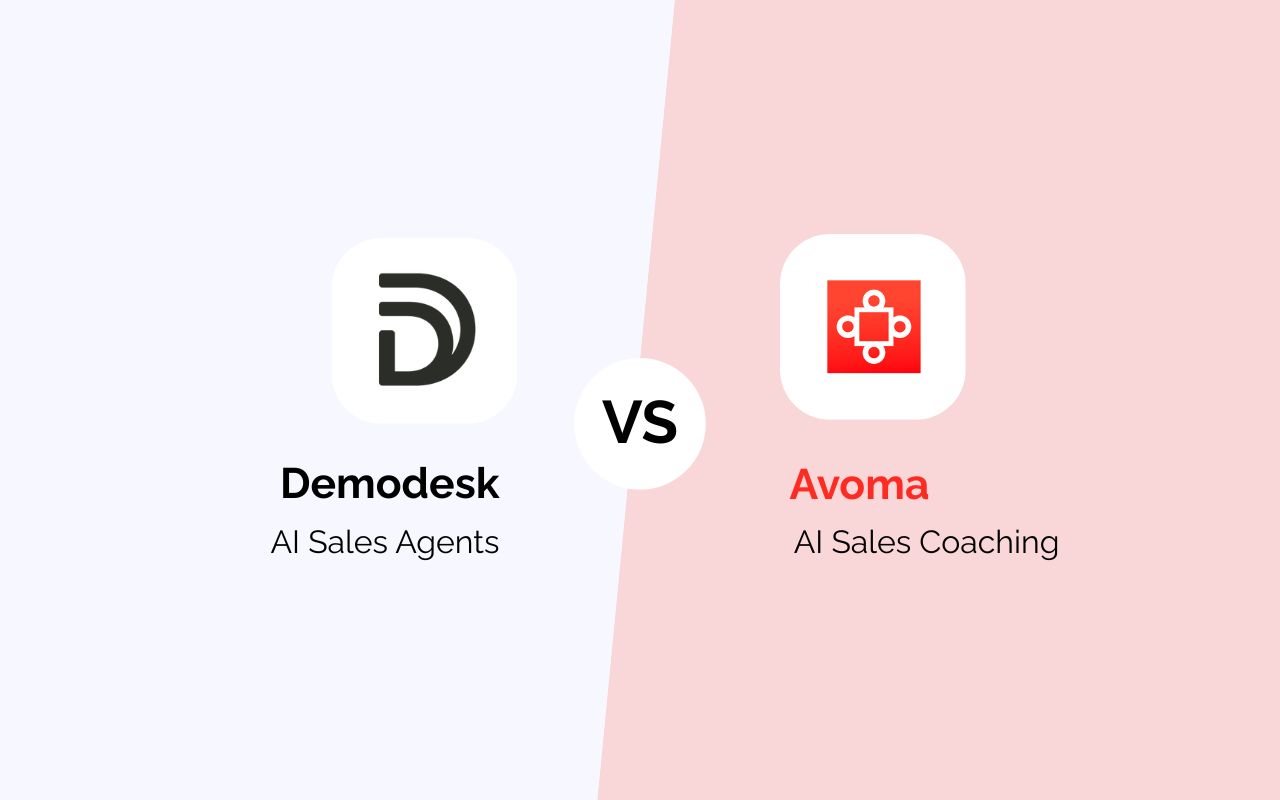Many sales teams struggle with engagement and retention. Traditional training methods don’t work and are generally boring.
Long lectures. Slide after slide. Passive learning.
These methods don’t keep attention, spark motivation, or lead to success. Instead, they leave reps feeling drained and unfocused. Eventually, they don’t see the point of going to sales training, and when the training ends, they walk away uninspired and unprepared.
They’re not ready to take on real-world selling challenges. And that’s where the problem lies.
This blog presents dynamic sales training games and activities that promote learning, amplify motivation, and improve overall team performance. These interactive exercises strengthen sales techniques and keep your team engaged and eager to improve.
How to choose the best training techniques for your sales team
Before starting the training, it's crucial to understand which game or activity enhances which specific skill. Successful coaches like Tony Robbins, Zig Ziglar, and Jim Rohn have always emphasized the value of personal development, which begins with a strategic focus on building the right skills.
Each training game or role-play targets or polishes a particular aspect of salesmanship. The list is long. It could be about refining communication, building confidence, or learning to handle objections effectively. So, it’s crucial to analyse what your team needs most.
When you know precisely which skill each game hones, you can tailor your approach to ensure your team grows most effectively.
The aim is not only to improve performance and drive better sales but also to accelerate the learning process. When you know which game and activity will reap which kind of benefit, you can achieve more in a shorter amount of time.
We have researched the most fruitful games that are bound to enhance specific skills:
1. The "Elevator Pitch" Challenge
How It Works
If you are looking for the most effective training, you cannot miss the elevator pitch. In this training activity, you give the sales rep a pressure cooker scenario and have them perform on the spot with limited time.
You don`t explain every single feature of the product. It's about hitting the key points that matter in a way that grabs attention.
Sales reps get 30-60 seconds, and that’s it. If they can’t convince in a minute, they’re out.
It trains your team to think on their feet, be laser-focused, and understand that clarity is the ultimate sales weapon.
Sendil Ravindran, Co-founder of Buyerstage, highlights that “Simplicity reduces friction and empowers buyers. And empowered buyers make decisions faster.”
The real world doesn’t give you 30 minutes to close a deal—it’s high stakes, and this challenge mirrors that urgency. The best salespeople are the ones who can take a big idea and break it down into something powerful, concise, and memorable.
It’s a great starting point to give your team some use cases or websites of specific companies on which to base their elevator pitch. Eventually, the team can decide if the elevator pitch was coherent with the business that was presented.
2. Sales Objection Handling Role-Play
How It Works
One person steps into the customer's shoes, and the other plays the salesperson. The customer makes real-world objections, such as, “Your price is too high.” “Let me think about it .”
The salesperson’s job is never to sound desperate or scripted. And sales isn’t about dodging objections; it’s about mastering them. Chinwendo, who is helping executives scale with sales, says:
“When a prospect objects, it means they’re still interested. Treat objections as openings for further discussion instead of roadblocks.”
One of the most tried-and-true methods for handling objections is Carew International’s LAER, which comprises four steps: listen, acknowledge, explore, and respond.
Top salespeople don’t just talk; they listen, diagnose, and respond with precision. This role-play is where you sharpen the edge that separates amateurs from pros.
3. Product Knowledge Quiz Show
How It Works
Selling starts with knowing your product inside out. Sometimes, these PDFs, awareness meetings, and training on product specifications can be boring.
So, we turned it into a game. We split the team into small groups, asked questions about technical details, benefits, features, and competitor comparisons, and kept score. The winner got bragging rights (or something better).
“The thing is that you can't sell what you don't know. Confidence comes from certainty. Certainty comes from knowledge.”
Product knowledge games help them stay sharp and informed. No matter your team size or resources, there are plenty of sales training games for employees that encourage participation and growth. Many options are completely free, but one thing is certain: competition rewires the brain. When there’s a scoreboard, people actually care. To make sharing and presenting these game results easier, you can use tools that convert Word to PowerPoint, turning training materials and outcomes into engaging slides for the team.
Most salespeople think they know their product, and this game ensures they actually do. The closer who knows their offer best closes more deals.
4. The Sales Scavenger Hunt
How It Works:
This training game is the simplest. First, you list customer needs, sales situations, or common objections. Then, you throw your sales team into the ring to find the best responses, solutions, or products for each challenge. The team that nails it first wins.
Dan Lok is spot on when he says, "You don’t lose sales because you don’t know your product. You lose them because you can’t identify your prospects' real problems and concerns."
Most salespeople are focused on features, but the buyer doesn’t care about that. They care about solving their pain. You'll never close if you can’t pinpoint what’s keeping them up at night. What matters is knowing how to diagnose their problems, uncover their fears, and address their actual needs.
In a reverse sales pitch game, salespeople are asked to pitch their product, but with a twist—they must do it from the customer's perspective. This forces them to think about the product or service in a new light, which helps them identify customer pain points and develop more customer-centric selling strategies.
5. Cold Call Roulette
How It Works:
A cold call roulette game helps your sales team practice cold calls in a high-pressure environment. Each rep randomly selects a “prospect” (who could be anything from a fictional persona to an actual lead) and must make the call.
Your trainer or other team members play the role of the customer, turning the situation into a genuine sales game. Because Jeremy Miner says, prospects are mentally wired to say NO to a sales call.
Brandon Murlenin says the best pattern interrupt for a cold call opening line is “Before you hang up, real quick, I was hoping to tell you why I called you! ”
This game gives sales reps the confidence to make cold calls, helping them become comfortable with rejection and overcome awkward moments.
They don't just connect; they are trained to ask the right questions and navigate the conversation.
It works like a real-life simulator building up real sales pressure. When reps hit the phone for real, they’re ready for anything.
6. Customer Persona Bingo
How It Works
The participants are provided with a bingo card containing various customer personas in each box. When the trainer presents various scenarios, salespeople cross off the respective personas that apply. The winner is the first one to have five in a row.
Based on the objective of creating an awareness of the customer's needs and motivations, fast thinking, and facilitation of learning through interaction, we have made a bingo card that may be utilised in the game:
7. The "Close the Deal" Competition
How It Works
This is where you put your skills to the test. You throw real-life sales scenarios at you. For eaxample dealing with hesitant clients, negotiating with multiple decision-makers—and you’ve got to come up with the best closing strategy to seal the deal. No fluff, just real tactics.
This training game is aimed at teaching the most effective closing techniques with unshakable confidence. Dan Lok’s right when he says:
“Closing isn’t about pushing features or talking about how great your product is. It’s about reading your prospect, understanding their needs, empathizing with their struggles, and guiding them to make the right decision.”
That’s the difference between a good salesperson and a great one. This competition? It’s how you make that difference.
8. Mystery Shopper Exercise
How It Works
In this training exercise, you use a mystery shopper to evaluate the performance of your salespeople. This mystery shopper could be a team member or even a guest consultant from other companies.

Image courtesy of LinkedIn
You can collect the feedback in forms and make a report. This report will give the salesperson feedback on how well they completed the sale, recognize the customer's needs, and offer useful real-time feedback.
It can give a true picture of the different areas where the sales processes can be improved. Encourages better customer interaction
Other sales training activities
Techniques and Scenarios for Sales Training Role Play
Most sales role-play feels fake, forced, and straight-up useless. Why? Because it’s too scripted. Real sales calls are unpredictable, emotional, and full of curveballs. Your training should be too.
Here’s how to make training role-playing actually valuable:
By making role-playing more dynamic, realistic, and unexpected, you can eliminate the "forced" sense and turn it into a useful exercise.
1. Use Real-Life Situations
Roleplays are one of the most amazing ways to train, where you get to represent real-life situations. For example, you could use a recent sales call, customer interactions, or any difficulty the team has experienced and have a competition to see who performs the best. Example:
"Suppose you're discussing with a prospect who just signed up for a demo but has ignored follow-up emails. How do you get them engaged again?"
2. Introduce Surprise Turns
Add a little bit of unpredictability to the role-play so that it is not merely a "this is what you should do" situation. Create unplanned changes in the customer's mood, needs, or objections. This will replicate real-world uncertainty and introduce an element of surprise.
Example:
Begin with a positive exchange and then have the customer suddenly show doubt or bring up an unexpected objection—making the salesperson quickly switch gears.
3. Utilize a Storytelling Approach
Put the role-play within the context of a story where the team is working within an ongoing narrative with changing customer requirements. It will not be so much "acting" as joining in on a genuine situation.
4. Incorporate Fun Elements
Add a touch of gamification to the role-play. Turn it into a friendly competition by rewarding or recognizing creative solutions. You can even use technology (such as a voting system) to test how well the team performs under various situations.
Example:
Develop a "Sales Olympics" where each team must complete a different role-play scenario (such as handling objections, resisting resistance, or selling a product within 60 seconds) to score points.
5. Employ Genuine Feedback from Coworkers
Rather than only having managers provide feedback, allow team members to provide feedback to one another in a supportive and constructive manner. This peer-to-peer process can make the experience feel more like a collaborative process and less of a judgment process.
Sales training needs to be as dynamic as the real thing. If your reps can handle a chaotic, unpredictable role-play, they’ll dominate real calls.
Bonus: Free Sales Training Games and Activities [PDF Download]
- A collection of the best creative training techniques by Bob Pike, Christopher Busse
- Sales training games for sales managers and trainers
- Training course material
Digital AI Coaching: A Modern Tool for Sales Training
Sales training has never been more crucial, but today's market requires more than lectures and textbooks. Salespeople require hands-on experience to practice their skills.
Interactive sales exercises, such as role-playing, objection handling, and call review, serve as experiential learning processes that enhance performance and recall. These exercises equip salespeople with coping strategies for different situations and make the learning process more interesting and effective.
Technology, specifically AI-powered coaching, magnifies these impacts. AI can upgrade conventional training processes by providing personalized feedback, real-time coaching, and data-based insights.
Features to Look For: Essential Elements for a Comprehensive Sales Training Platform
When selecting a sales training software, consider platforms that offer these key features:
- Analytics & Performance Tracking:

An effective training platform must include robust analytics that offer insights into a sales rep's performance. This will allow managers to identify areas where each salesperson excels and areas where they need improvement.
- Customization:

Each sales team's needs are unique, and the training platform must accommodate these. Customizable modules enable managers to personalize the training to address industry-specific issues or the team's level of experience.
- User Engagement Metrics:

It doesn't suffice to simply train reps—tracking their participation is equally important. Seek out tools that monitor participation in activities such as quizzes and call reviews, providing insight into the engagement level of each rep during training.
How does Demodesk AI coaching give sales training and keep your team engaged?
Simulated sales calls
You can also use Demodesk AI coaching as a sales training game. To do so, you can simulate calls one of the sales reps' calls and have an improved mock conversation.
These conversations could involve introducing a new product or service, cold-calling practice, overcoming objections, closing techniques, a product pitch, or active listening.
After each session or mock call, in the case of gamification, the calls are transcribed and analyzed, and AI-powered feedback is given on their performance.
Scorecards & Gamification

Now, you need to give the sales rep feedback. Auto feedback can be on speech clarity, confidence, and objection handling. With data-driven feedback, reps can refine their pitches like never before.
You can add a little twist by adding gamification elements, such as scorecards, leaderboards, and badges.
With sales frameworks like BANT, MEDDIC, and SPICED, sales teams can track their progress, measure key sales skills, and engage in friendly competitions to see who improves the most over time.
Team Performance Insights

A sales rep would need only instant, personalized, and actionable feedback from the AI sales coach.

Detailed conversational metrics like the above help the sales rep improve their future sales call.
Call till you fall
Another game you can play to train sales reps is the Call Till You Fall Challenge.
In this fast-paced competition, sales reps make as many cold calls as possible to book meetings. The goal is to secure the highest number of meetings by the end of the day. The rep with the most scheduled meetings wins. To enhance performance, AI-driven tools can analyze call effectiveness, providing insights on tone, pacing, and engagement to help refine pitching strategies in real time.
Success Stories: Companies Thriving with Engaging Sales Training
Here are three authentic examples of good practices in sales training gamification:
Case Study 1: Gamified Training Enhancing Sales Performance
According to a report by Infopro Learning, a leading North American auto club collaborated with them to transform traditional training into an interactive, gamified experience.
This initiative led to improved member retention, enhanced call-handling quality, and increased employee satisfaction and retention.
Bunchball provides a cloud-based gamification platform called Nitro, which integrates game mechanics like badges, points, and leaderboards into various applications. In sales training, Nitro can motivate sales teams by adding gamification elements to platforms like Salesforce.com, thereby enhancing engagement and performance.
Case Study 2: Role-Playing to Boost Team Confidence and Closing Rates
Vorecol outlines how a top technology company incorporated role-playing drills into its sales training program and, after six months, improved sales performance by 30% and reduced customer complaints by 25%.
Visual Learning: Top Sales Training YouTube Channels and Videos
To enhance your sales skills through visual learning, here are some top YouTube channels and specific videos offering valuable sales training content:
Top Sales Training YouTube Channels:
- Dan Lok
Dan Lok is a successful entrepreneur and sales coach who offers advice on closing sales, high-ticket sales, and self-improvement. - Victor Antonio
Victor Antonio offers actionable sales strategies, motivational posts, and sales performance improvement strategies. - The Wolf of Wall Street
Jordan Belfort, the Wolf of Wall Street, provides sales training videos that emphasize persuasion, closing strategies, and the Straight Line Sales System.
Conclusion
Sales training can be tedious. However, endless PowerPoints, passive learning, and lectures full of theory don't necessarily equate to improved sales performance. The answer? Sales training games and activities that make learning hands-on, interactive, and effective.
But ongoing feedback is more important than that. A robust feedback loop helps reps adjust, hone their skills, and improve over time. The secret? Sales coaching that keeps pace with them, translating learning into sustained performance.
These techniques, from role-playing situations to AI-facilitated coaching, enable your team to hone their skills, increase their confidence, and close more sales.
Contact us today for customized AI coaching to keep your team ahead of the curve.

%201.avif)


.png)


.png)





